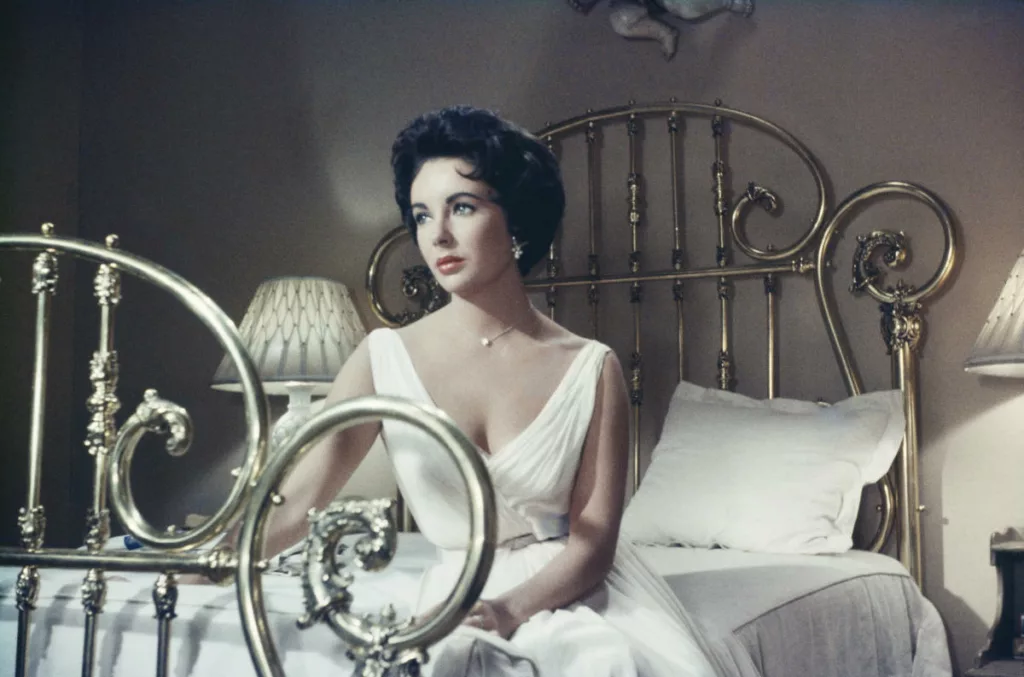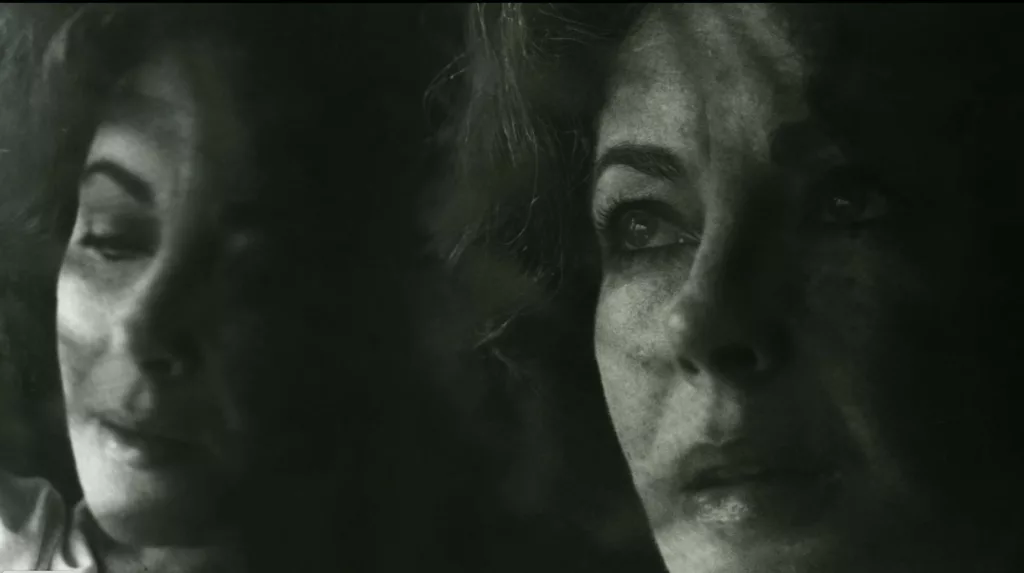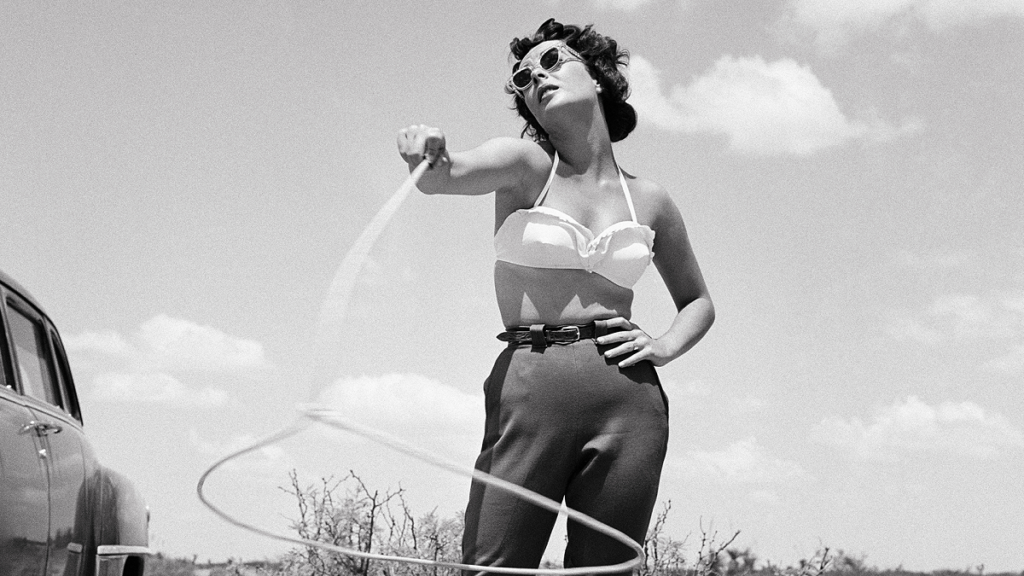Nanette Burstein’s documentary Elizabeth Taylor: The Lost Tapes takes us back to 1964, presenting a treasure trove of never-before-heard interviews between Elizabeth Taylor and journalist Richard Meryman. Made during the height of her fame, these recordings capture Liz reflecting on her astonishing life and career up to that point.
In her early thirties, Taylor was already a veteran of over four decades in Hollywood. She began as a child performer at MGM, bewitching audiences with her natural charm and beauty. By the 1960s, her iconic looks had been matched by iconic roles, from dramatic turns in A Place in the Sun and Giant to more polarizing parts like Butterfield 8 and Suddenly Last Summer. Through it all, Taylor’s magnetic screen presence remained undimmed.
Burstein’s film is a rare treat. We get to hear Taylor’s playful yet candid recollections in her own melodic voice. Whether discussing legendary co-stars like Montgomery Clift, Jimmy Dean, and Rock Hudson or dissecting headline-making romances, she does so with warmth and wit. Archival imagery poignantly illustrates her words, from behind-the-scenes clips to intimate home videos. In this way, the documentary brings Liz’s inimitable spirit vividly to life even today.
Most valuably, it preserves Taylor’s first-hand account during a volatile period for her public image. Her marriages, divorces, and roles in scandal-courting films like Cleopatra had made her one of the most scrutinized celebrities in the world. Elizabeth Taylor: The Lost Tapes thus offers invaluable insight into the woman behind the legend.
The Lost Voice of Liz
Around 1964, famed Hollywood actress Elizabeth Taylor sat down for a series of intimate interviews with journalist Richard Meryman. The pair’s discussions were recorded to aid in crafting an upcoming autobiography highlighting Liz’s prolific life and career up to that point. Little did they know, these talks would eventually give new insight decades later.
Meryman knew getting Taylor’s firsthand account was a rare opportunity. As one of the biggest movie stars in the world, her every move made headlines. But behind closed doors, what was the real Liz like, away from the public eye? By conducting lengthy recorded conversations, Meryman hoped to peel back the layers and share Liz’s untold perspectives.
Over 40 hours of reels captured Taylor reflecting with candor. Probing questions spanned her childhood ambitions, rise to fame, and major roles. Her perspective on controversial choices like scandal-courting films and tumultuous marriages also emerged. Yet for nearly 60 years, these priceless recordings sat dormant, stored away, and long forgotten.
It was only through diligent detective work that filmmaker Nanette Burstein tracked them down. With the blessing of Taylor and Meryman’s estates, she was granted access to resurrect Liz’s powerful voice once more. State-of-the-art restoration brought the reels to life with pristine clarity, as if just recorded.
Listeners are treated to an intimate conversation that spans a pivotal period for Taylor. By 1964, she had already cemented icon status with credits in A Place in the Sun and Cat on a Hot Tin Roof under her belt. Yet the peak of her fame and notoriety lay ahead, with monumental roles in Cleopatra and Virginia Woolf soon to come.
The lost interviews offer an unparalleled opportunity to hear Taylor’s candid reflections before making that extra leap. Fans and historians alike can rediscover the inimitable star, speaking for herself in ways the documentary form so artfully preserves.
A Voice from the Past
From an early age, Elizabeth Taylor knew she wanted to act. In the interviews, she vividly recalls practicing scripts as a young girl and her determination to land big roles. Listeners get a real sense of her drive from an early age.
We also gain fresh insight into Taylor’s celebrated collaborations. She speaks fondly of George Stevens and their work on A Place in the Sun. Their connection helped improve her confidence in more serious parts. Yet Taylor admits clashes emerged during Giant, as Stevens pushed her as merely a “movie star.”
Working with stars like Montgomery Clift and James Dean left deep impressions, too. Taylor shares endearing anecdotes of Clift offering guidance and Dean opening up about his inner struggles. The interviews perfectly capture her genuine friendships with several iconic actors.
Of course, Taylor’s famously tumultuous love life fascinated the public. In her own words, we get more nuanced perspectives. She openly acknowledges mistakes like her impulsive marriage to Eddie Fisher. Though she says caring for Fisher after Mike Todd’s death “seemed like the right thing,”
When discussing Richard Burton, her affection comes through despite acknowledging issues. Taylor says they tried being “good,” but it “didn’t work.” We gain an intimate view of their passionate bond that regularly courted scandal.
Overall, these recordings peel back layers on a much-analyzed star. Taylor is remarkably candid about her ambitions, collaborations, and relationships. Listeners feel like they’re having an engaged chat with the actress herself. Her reflections, while sometimes guarded, offer real glimpses into the woman behind the iconic on-screen persona. It’s easy to see why this collection of interviews provides enduring insights into Hollywood royalty.
Rediscovering Liz Through Archival Media
Burstein crafts her documentary into a visual masterpiece through the ingenious use of archival materials. Photographs and newsreels transcend being mere illustrations, breathing vibrant life into Taylor’s story.
Scenes like crowds greeting the actress perfectly set the scene for her fame. Images from early roles also remind us of Taylor’s breathtaking beauty at a young age. But it’s the informal photos, like her in mourning after Mike Todd’s death, that reveal private dimensions.
Context extends beyond what Taylor shares, too. Footage of that infamous plane press conference asks tougher questions about attitudes from the past. Meanwhile, George Hamilton’s perspective peeks behind Hollywood’s polished facade.
The director wisely lets these historical sources speak for themselves. Combined with the clarity of Taylor’s taped interviews, her world is illuminated in fascinating context. Memories become anchored in their time through visual correlates.
Ultimacy: Burstein pays homage to a cinematic icon while challenging preconceptions. Through careful selection and placement, she uses imagery to fill in dramatic gaps. We observe Taylor’s journey through both her perspectives and how the public engages with her constantly evolving image.
This savvy incorporation of archival materials elevates the film far above a standard talking head document. It transports viewers, giving new eyes through which to view Hollywood royalty and better grasp Taylor’s boundary-pushing life in her era. The result brings this lost piece of her magic vividly back to life.
Liz Opens Up About Controversial Eras
Some of the documentary’s richest parts see Taylor reflecting on two iconic but tumultuous periods. She goes into filming Cat on a Hot Tin Roof just after Mike Todd’s death. Losing her beloved third husband at 30 was crushingly hard. But the role proved ironically cathartic, letting her channel grief into raw anger.
Next came the mother of all Hollywood scandals—Cleopatra. Here, Taylor opens up more than expected. On set in Rome, passions flared with co-star Richard Burton, despite both being married. The Vatican denounced their affair, but Taylor never apologized. “Richard and I tried being ‘good’ but it didn’t work,” she states matter-of-factly.
She discusses the hellish paparazzi spotlight the scandal sparked. Yet Taylor feels nostalgia for a pre-tabloid age too, when studios spun idealized personas. Seeing the human underneath made audiences feel closer to the stars, not further. At the same time, she never complains about press intrusion either. A shrewd realist, Taylor treats it as a fact of life.
Her perspectives are fascinating. Taylor acknowledges her famous image as a commodity but doubts any star truly controls perceptions in the end. She also downplays perceptions of herself as overly sexual, saying she simply portrayed feminine roles authentically. It’s refreshing to hear Taylor’s candid, nuanced views on chapters that still excite debate today. She displays both humility and confidence gained through immense experience.
In opening a window to Taylor the person, not just an icon, this documentary proves invaluable. It gives deeper insight into how she navigated fame and the double standards of her time with sincerity and resilience. Her interviews provide an intimate look back on a life few could imagine, and fewer still survive with such perceptiveness and grace.
Liz’s Impact Goes Beyond the Screen
While the tapes ended in the 1960s, Taylor’s influence stretched for decades more. After Virginia Woolf won her second Oscar in 1966, she remained a formidable presence on screen. Films like The Taming of the Shrew showed her talent for Shakespeare, while Who Are You, Polly Magoo? was an underrated comedy gem.
Off screen, Taylor’s impact grew too. When close friend Rock Hudson died of AIDS in 1985, she founded AmfAR to support HIV/AIDS research. This was groundbreaking—one of the first major celebrities to openly battle the stigma. Taylor threw herself into fundraising with her usual gusto, ultimately raising millions.
As she aged, Taylor also came to represent something more. Where some icons faded, she faced each new phase with resilience and candor. Her weight battles, health struggles, and numerous marriages were topics of public fascination. But Taylor met them all with humility and humor. She understood her power lay not in myth but in being fully human.
This enduring legacy is what makes Taylor an inspiration today. At a time when so few openly discussed diseases like AIDS, she was a pioneering voice. Even as tabloid fodder, she retained her dignity. Taylor showed us that icons are most powerful when they are real—when they can laugh at flaws, comfort others, and keep living and learning despite life’s unknowns. Hers was a career that, like the woman herself, only grew more fascinating with time.
Taylor in Her Own Words
Nanette Burstein’s documentary brings us a special gift: the chance to hear Elizabeth Taylor’s vivid voice from the past. Through 40 hours of recordings from the mid-1960s, Liz speaks directly about her remarkable life and career.
Burstein shapes these tapes into a living portrait. We observe Taylor freely recalling her ambitions, triumphs, and mistakes. At times playful, at others piercingly honest, her recollections imbue familiar events with renewed insight.
Spotlighting Taylor’s voice proves an inspired choice. We connect with her wit, candor, and self-awareness in a way text alone could never convey. Her engaging speech breathes life into archival photos and clips, deeply enriching our understanding.
To be sure, there are a few major revelations: Taylor managed her public persona too skillfully. But small details, like her disdain for Fisher or annoyance with certain roles, offer nuance.
Burstein complements the audio elegantly. Archival material perfectly illustrates Taylor’s words while avoiding overshadowing her. This balanced approach keeps Liz front and center, where she belongs.
Through it all, we’re reminded how fully Taylor owned her stardom and story. Now, decades later, she gifts us with renewed appreciation for her iconic career and character. By bringing viewers closer to the person behind the fame, Burstein’s film ensures Taylor’s legacy will live on for generations to come.
Liz’s Legacy Lives On
So in wrapping up, what’s perhaps most striking about this documentary is getting to hear Elizabeth Taylor’s voice directly. Her playful yet perceptive recollections offer true insight into gracing Hollywood’s biggest stages.
We learn not only about navigating immense fame at a tender age but also the human struggles that came with it. Whether enduring tragedy, navigating scandal, or simply reflecting on her craft, Liz does so with candor and self-awareness. Her colorful tales bring personality to events that are sometimes read as mere headlines.
Crucially, Burstein lets Taylor take center stage, supplementing her narratives just enough. Archival imagery stimulates memory yet doesn’t distract from the living, breathing woman speaking. It’s a testament to the filmmaker’s respect for her subject.
Overall, Elizabeth Taylor: The Lost Tapes succeeds through its most innovative asset: premiering the legend’s own words on screen once more. By privileging Liz’s perspective, we gain fresh angles on a towering talent and complicated life. Hers was a star that burned bright, and this documentary ensures her magical spirit lives on through the memories she left in her own distinct voice. Some may know Taylor’s story, but few have experienced it quite like this.
The Review
Elizabeth Taylor: The Lost Tapes
Elizabeth Taylor: The Lost Tapes presents a rare gift: the opportunity to hear one of cinema's greatest stars reflect on her own storied life and career decades later. Director Nanette Burstein elegantly crafts this living record by privileging Taylor's vivid recollections and voice above all else. While few revelations emerge, Liz's engaging personal memories imbue even familiar events with renewed insight and nuance. This documentary succeeds through its most cutting-edge element: bringing Hollywood royalty's perspective directly to modern audiences, as she herself might have told it. For any lover of film or Taylor herself, losing oneself in the luminous sounds of a legendary icon is a memory to treasure.
PROS
- Hearing Elizabeth Taylor's voice directly through unearthed recordings is fascinating.
- Her recollections provide refreshing new perspectives on iconic moments.
- The director skillfully structures the film around Taylor's narratives.
- Archival imagery enhances without distracting from her first-hand account.
CONS
- Few true "revelations" for those familiar with Taylor's life story
- Reliance on voiceovers leaves potential for additional context.
- The narrative moves quickly at times, lacking depth on some topics.



















































